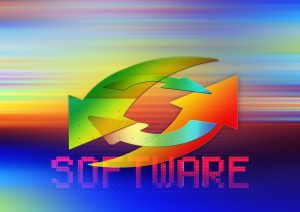Pinpointing System Bottlenecks with Our Advanced Benchmarking Tools

In the modern digital era, computer systems have become more powerful and complex than ever before. From desktop PCs to enterprise servers and cloud infrastructure, the hardware and software stack comprises numerous components that must operate in harmony to deliver smooth and responsive computational power. However, over time, one or more subsystems can develop into a bottleneck that impedes overall performance. Identifying and resolving these bottlenecks is key to maintaining efficiency. This is where utilizing advanced benchmarking and diagnostic tools comes into play.
Benchmarking software provides objective metrics to measure the speed and capability of your computer’s subsystems under simulated workloads. Detailed testing can pinpoint bottlenecks down to the exact culprit component. This essay will discuss how running benchmarks with our all-in-one system diagnostics suite can help quickly identify bottlenecks slowing down your computer.
Stress Testing Subsystems
The first benefit of leveraging benchmarking tools is the ability to stress test and gauge the performance of individual system components. The suite offers targeted benchmarks that isolate specific subsystems like the CPU, memory, storage, and graphics.
The CPU benchmark measures raw processing power by timing operations like matrix calculations, physics simulations, encryption, etc. Slow scores indicate an aging CPU that is throttling down. Upgrading to a newer processor resolves the bottleneck.
Our memory benchmark stresses RAM capacity by allocating and accessing large data sets. Insufficient memory sizes will significantly degrade performance. Adding more RAM alleviates such bottlenecks.
The storage benchmark tests transfer speeds by timing file copy operations and simulated load times for applications and games. If your hard drive or SSD is causing lag, an upgrade is warranted.
Graphics benchmarks render intensive 3D scenes with complex textures, lighting, particles and physics to heat up your video card and driver software. Bottlenecks here imply a GPU upgrade is needed for smooth gaming and media creation.
Rather than guessing where your computer is slow, these focused benchmarks measure exactly which components are up to the task and which need an upgrade.
Simulating Real-World Usage
In addition to testing individual hardware, our benchmarking suite also offers system-wide tools that simulate real-world computer usage. The aim is to identify bottlenecks while operating the PC as a whole.
The multitasking benchmark overwhelms your system by opening multiple demanding apps concurrently. Slowdown while gaming, video conferencing, and browsing simultaneously highlights a subsystem that’s maxed out.
Our productivity benchmark emulates heavy office work by running tasks like document editing, data analysis, compiling code, file compression, and more simultaneously. Bottlenecks with everyday work are revealed.
The startup/shutdown tools measure how long boots and application launches take. Excessive times indicate fragmention, background bloatware or an overloaded system drive that should be upgraded.
For gamers, our specialized game benchmark utility times in-game FPS rates during graphically intensive scenes. Dips and stuttering expose a GPU, CPU or RAM bottleneck.
Rather than just testing components in isolation, these real-world benchmarks identify if your whole system buckles under heavy multitasking loads. Any dips in responsiveness indicate upgrades are needed.
RAM/VRAM Usage
Aside from raw speed, our suite also monitors critical memory usage metrics that can uncover bottlenecks.
The RAM monitor tracks overall memory utilization along with per-application consumption. Spiking usage that eats up available RAM reveals programs hogging resources and possible memory leaks.
Similarly, the VRAM monitor tracks video memory taken up by 3D applications and games. Maxed out VRAM points to insufficient graphics memory that hinders performance.
An advanced memory analyzer further assesses the impact from memory-intensive programs. By revealing pages faults and cache misses, it signals RAM bottlenecks down to the technical level.
Without visibility into memory usage, out-of-memory bottlenecks can be hard to diagnose. Our suite provides the vital data.
Resource Monitoring
Comprehensive resource monitoring is also integral to detecting bottlenecks while your computer is in use. Our diagnostic suite tracks key metrics including:
• CPU usage per core
• CPU temperatures and throttling
• RAM utilization
• Disk capacity and transfers
• Network utilization per app
• GPU usage and temps
• Active processes and services
Performance issues with intensive gaming/workloads show up clearly when monitoring resources in real-time. Sudden spikes in usage exposes culprits behind poor responsiveness. The suite even logs data for later analysis.
With robust telemetry across all critical system resources, the tools provide invaluable data to catch bottlenecks as they happen.
Identifying Faulty Hardware
Aside from usage bottlenecks, our benchmarking suite also includes tools to identify faulty hardware components themselves.
The suite offers dedicated diagnostics that perform exhaustive tests on your CPU, RAM, hard drive, network card, and GPU to check for errors and failures. Damaged components, even if rarely used, can bring your system to a crawl.
Our robust hardware diagnostics isolate faults down to the exact failing component. They catch deterioration before bottlenecks even occur, allowing preventative maintenance.
The suite also monitors heat and voltages across components. Excessive temperatures, power fluctuations and mechanical noises can foreshadow imminent component failure.
Proactive checks for damage and deterioration provide vital warnings that flagged hardware should be replaced before it slows down your computer.
Easy Reporting
The final advantage of our comprehensive benchmark and diagnostics suite is clear reporting to summarize system health, bottlenecks, and upgrade recommendations.
After any scan, you get a reliability and performance score for your machine. Trend data illustrates deteriorating components and bottlenecks over time.
Plain English summaries explain technical issues and which upgrades will improve performance based on your actual usage patterns. Our reports spare you theguesswork when deciphering where your system lags.
For power users, detailed logs allow pinpoint diagnosis of exactly which subsystem is underpowered or malfunctioning. The suite Tailors reports for both novice and professional audiences.
By transforming sysstem data into actionable insights, the suite makes eliminating bottlenecks easy. Our reports distill vast technical detail into an accessible roadmap for enhancements.
In summary, advanced benchmarking and diagnostic utilities are invaluable for identifying bottlenecks and maintaining optimal system performance as computers age. Our comprehensive suite isolates sluggish components with both synthetic and real-world benchmarks across CPU, memory, graphics, storage and whole system usage. Monitoring critical system resources under load reveals issues. Dedicated hardware tests proactively uncover component failures before they become debilitating. By transforming technical metrics into accessible reports, our suite makes eliminating bottlenecks simple for users at any skill level. Given the complexity of modern hardware and software, using objective data for enhancements beats blind guesswork. Our benchmarking tools provide the actionable intelligence needed to detect and resolve any impeding bottlenecks through upgrades, repairs or configuration tweaks. Keep your computer running at its full potential by letting our suite pinpoint exactly where performance suffers. The modest investment will pay dividends for years by uncovering bottlenecks before they frustrate you.







